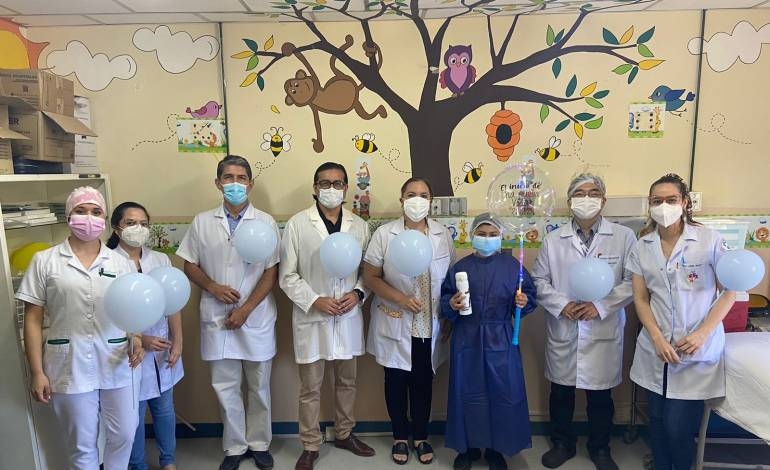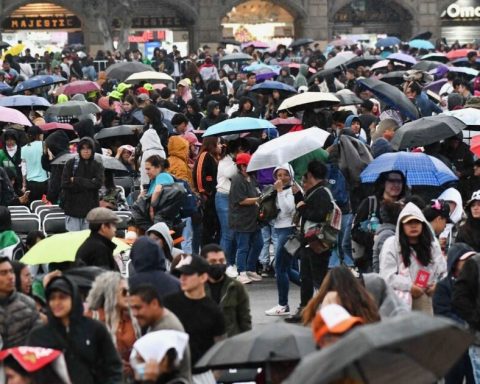Unmistakable with her multicolored suits and hands full of rings and bracelets, Rosario Murillo is the increasingly powerful and omnipresent wife of the president of Nicaragua, Daniel Ortega, with whom she will share her fourth consecutive government as vice-presidency.
“We have two presidents here because we respect the 50-50 principle, that is, here we have a co-presidency with comrade Rosario,” Ortega said prior to the elections last November.
Murillo, 70, assumes the vice presidency for the second time since 2017, a position that makes her the first successor to the president, five years older than her.
The couple headed the presidential formula of the ruling Sandinista Front (FSLN, left) that won the elections on November 7, while seven opposition candidates were imprisoned and a climate of repression reigned against any protest or criticism.
Since 2007, when Ortega returned to power after the revolution he led in the 1980s, Murillo has also been his sole spokesperson.
It is the visible and operational face of the government, with a high capacity for work. He accompanies Ortega in all his public appearances and in political corridors it is said that no official moves a finger without his authorization.
For 15 years he has been reporting on the work of the government, the weather, the day’s saints, the advances in the anticovid vaccination … everything, as a poet that he is, with a metaphorical language, speaking of peace and harmony, always mentioned to “God “and the” Virgin “, and describing his adversaries as” diabolic “,” terrorists “,” outlaws “and” cheap “.
“We are going to banish evil,” he said recently, alluding to his political adversaries.
– Relative of Sandino –
She met Ortega during the fight against the Somoza dictatorship (1937-1979) and after years of living together they married in 2005.
He was born on June 22, 1951 in Managua. His mother, Zoilamérica Zambrana Sandino, was the niece of General Augusto César Sandino, the nationalist hero for whom the FSLN is named.
Her father Teódulo Murillo was a wealthy producer who “adored” his daughter “for the intelligence she showed” and her interest in books and poetry, says the writer Fabián Medina in his book “El Preso 198”.
When she was 11 years old, her father sent her to study secretarial work in England and Switzerland, where she learned English and some French. On one occasion, on vacation in Nicaragua, her mother made her marry Jorge Narváez, from whom – according to Medina – she became pregnant at 15 years of age. With him he had two children, Zoilamérica and Rafael.
Divorced from Narváez, she married the journalist Hanuar Hassan, with whom she had a child whose death, in the 1972 earthquake, inspired her to write her first poems in 1973.
In 1968, she came to work for the newspaper La Prensa as the secretary of the then director Pedro Joaquín Chamorro, a staunch critic of Somocismo assassinated in 1978 and whose wife Violeta Barrios was the first woman to govern Nicaragua between 1990 and 1997.
Today, two children of Pedro Joaquín and Violeta: Cristiana – a former presidential candidate – and Pedro, are detained as well as another forty other important opponents of Ortega.
– Mother and “persecutor” –
In 1969 he joined the FSLN and in the 1970s he helped found a movement of artists opposed to Somoza.
In 1977 he went into exile to Panama, Venezuela and Costa Rica, where he met Ortega, with whom he returned to Nicaragua in 1979 when the revolution triumphed. There he headed cultural organizations.
In his memoirs, the late poet and priest Ernesto Cardenal tells about the influence that Murillo had on Ortega since then.
With Ortega he had seven children. When in 1998 Zoilamérica accused her adoptive father of sexual abuse, Murillo turned her back on him and declared she felt “ashamed” of her daughter.
“I would have understood that she was silent, but not that she became my main persecutor,” Zoilamérica said in an interview last year with AFP in Costa Rica, where she lives in exile.
Murillo marked his own style in government. She also loves the large necklaces and earrings that stand out in her curly hair, she decorates official ceremonies with flowers and years ago she had a hundred huge “trees of life” installed in Managua, made of metal and colored, a symbol of power. .
Among Nicaraguans there is talk of their supposed esoteric beliefs. The writer Gioconda Belli describes her as a “superstitious” woman.











